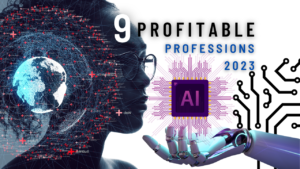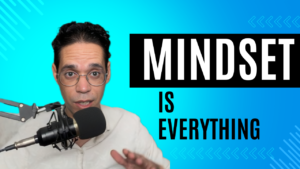
In an increasingly digital world, blogging has evolved from a simple online journal into a powerful platform for influence, connection, and, most importantly, income. Far from being a fleeting trend, blogging continues to be a viable and lucrative venture for individuals and businesses alike in 2025. Whether you dream of financial independence, desire to share your expertise, or simply want to build a community around a passion, understanding how to effectively monetize your blog is the key to transforming it from a hobby into a thriving enterprise.
This comprehensive guide will walk you through the essential steps to make money from blogging, from laying the foundational groundwork to implementing advanced monetization strategies and ensuring long-term success.
1. Laying the Foundation: Niche Selection and Blog Setup
The journey to a profitable blog begins long before the first word is written. It starts with strategic planning, focusing on two critical elements: niche selection and technical setup.
Choosing Your Niche: The Cornerstone of Success
Your niche is the specific topic or area your blog will focus on. A well-chosen niche is crucial because it defines your target audience, shapes your content strategy, and ultimately determines your monetization potential. Don’t fall into the trap of trying to appeal to everyone; specialization is key to standing out in a crowded online space.
How to Identify a Profitable Niche:
- Passion Meets Profit: Ideally, your niche should be something you are genuinely passionate about. This ensures long-term motivation and allows you to create authentic, engaging content. However, passion alone isn’t enough; there must also be demand and monetization opportunities.
- Problem-Solving: The most successful blogs often address a specific problem or need. Think about what questions your audience has, what challenges they face, or what aspirations they hold. Niches like personal finance (debt management, financial planning), health and wellness (meal prep, fitness, mental health), education, and technology (AI, cybersecurity) consistently show high search volume and advertiser interest.
- Audience Size and Competition: Use tools like Google Keyword Planner, Ahrefs, or SEMrush to research search volume and keyword difficulty. A niche with decent search volume but manageable competition is ideal for newer bloggers. Explore online communities (Facebook groups, Reddit, Quora) to gauge audience engagement and identify unanswered questions.
- Monetization Potential: Some niches naturally lend themselves to higher-paying affiliate programs, direct ad sales, or product creation. For instance, SaaS products, beauty items, and financial services often offer attractive commission rates in affiliate marketing.
Setting Up Your Blog: The Technical Backbone
Once you have your niche, it’s time to build your platform. While various blogging platforms exist, for serious monetization, self-hosted WordPress (.org) is widely regarded as the best choice due to its unparalleled flexibility, scalability, and vast array of plugins and themes.
Key Components of Blog Setup:
- Domain Name: Your blog’s address on the internet (e.g., https://www.google.com/search?q=yourblogname.com). Choose something memorable, relevant to your niche, and easy to type.
- Web Hosting: This is where your website’s files are stored. Reputable hosts like Bluehost, SiteGround, or Hostinger offer reliable service, good loading speeds, and often one-click WordPress installation. Fast loading times and mobile responsiveness are crucial for both user experience and SEO.
- WordPress (.org): Install WordPress on your hosting account. This open-source content management system gives you complete control over your site’s design, functionality, and monetization.
- Theme and Plugins: Select a clean, professional, and mobile-responsive WordPress theme. Install essential plugins for SEO (e.g., Yoast SEO), security, caching (for speed), and analytics. WooCommerce integration is beneficial if you plan to sell physical or digital products.
2. Content is King: Creating Value and Driving Traffic
With your blog set up, the next crucial step is creating high-quality, valuable content and ensuring it reaches your target audience. Content is the fuel that powers your blog’s growth and monetization.
Crafting Engaging and SEO-Optimized Content
Your content needs to be exceptional to stand out. It should solve problems, educate, entertain, or inspire your readers.
- Keyword Research and Intent: Every piece of content should be built around target keywords. Don’t just focus on high search volume; understand the user’s search intent (informational, navigational, commercial, transactional). Use keyword research tools to find low-to-medium competition keywords with solid volume, especially when starting.
- Quality and Depth: Go beyond superficial articles. Provide in-depth, well-researched, and actionable content. Aim to be the definitive resource on a topic. Long-form content often performs better in search rankings and offers more opportunities for internal linking and monetization.
- Readability and User Experience (UX): Use clear headings (H1, H2, H3), short paragraphs, bullet points, and high-quality images/videos to break up text and improve readability. A smooth, user-friendly blog keeps readers engaged.
- Consistency: Regular publishing signals reliability to both readers and search engines. Develop a content calendar to plan topics in advance and maintain a consistent schedule.
- Internal and External Linking: Link to other relevant posts on your blog (internal linking) to improve site navigation and SEO. Link to credible external sources to support your claims and build authority.
Traffic Generation Strategies
Even the best content won’t make money if no one sees it. Driving consistent traffic to your blog is paramount.
- Search Engine Optimization (SEO): This is the most sustainable long-term traffic strategy.
- On-Page SEO: Optimizing individual blog posts for target keywords, including them in titles, meta descriptions, headings, and throughout the content. Ensure your URLs are SEO-friendly.
- Technical SEO: Site speed, mobile-friendliness, secure (HTTPS) connection, and a well-structured site hierarchy.
- Off-Page SEO: Building high-quality backlinks from other reputable websites. This can be achieved through guest posting, creating link-worthy content, and blogger outreach.
- Social Media Promotion: Share your blog posts across relevant social media platforms where your target audience spends time (e.g., Pinterest for visual content, Facebook groups for community engagement, X for quick updates). Create “snackable” content (reels, carousels) that teases your blog posts.
- Email Marketing: Building an email list is crucial. It gives you direct access to your audience, allowing you to notify them of new posts, exclusive content, or product offers. Offer lead magnets (free e-books, checklists) to encourage sign-ups.
- Guest Posting: Writing for other reputable blogs in your niche allows you to tap into their audience, build credibility, and gain valuable backlinks.
- Community Engagement: Participate in niche-specific online forums, Reddit subreddits, and Facebook groups. Answer questions and subtly share your relevant blog content when appropriate, positioning yourself as an expert.
- Paid Traffic (Optional): Once your blog generates some organic traction, you can consider paid advertising (Google Ads, social media ads) to accelerate traffic growth, especially for product launches or specific promotions.
3. Monetization Strategies: Turning Traffic into Revenue
This is where the rubber meets the road. There are multiple ways to monetize a blog, and the most successful bloggers often employ a combination of strategies.
a) Advertising
Displaying ads on your blog is one of the most common and often earliest monetization methods.
- Google AdSense: A popular starting point for new bloggers. Google automatically displays relevant ads on your site, and you earn revenue based on clicks or impressions.
- Ad Networks (e.g., Media.net, Ezoic, AdThrive, Mediavine): As your traffic grows (typically 10,000-50,000 monthly page views for premium networks), you can join more sophisticated ad networks that often offer higher RPMs (revenue per mille/thousand impressions) and better ad placement optimization.
- Direct Ad Sales: Once your blog has significant traffic and a well-defined audience, you can sell ad space directly to businesses relevant to your niche. This allows for higher negotiation power and more control over ad content.
b) Affiliate Marketing
Promoting other companies’ products or services and earning a commission on sales made through your unique affiliate links.
- Choose Relevant Programs: Select products or services that genuinely align with your niche and that you would personally recommend. Amazon Associates is a popular choice for beginners due to its vast product selection. Many companies also offer their own affiliate programs.
- Integrate Naturally: Weave affiliate links seamlessly into your content. Product reviews, comparison articles, how-to guides, and resource lists are excellent vehicles for affiliate marketing.
- Transparency is Key: Always disclose your affiliate relationships to your readers, as required by the FTC and for building trust.
c) Selling Your Own Products or Services
This is often the most lucrative monetization strategy because you retain the majority of the revenue.
- Digital Products:
- E-books/Guides: Package your expertise into downloadable e-books or comprehensive guides.
- Online Courses: Create in-depth video or text-based courses. This can be highly profitable as it leverages your knowledge and can be sold repeatedly.
- Printables/Templates: Offer downloadable resources like planners, checklists, or graphic templates.
- Stock Photos/Illustrations: If you’re a creative, sell your original digital assets.
- Physical Products: If your niche allows, you can create and sell merchandise (e.g., t-shirts, mugs related to your brand) or physical products that complement your content.
- Services:
- Coaching/Consulting: Leverage your expertise by offering one-on-one coaching or consulting services.
- Freelance Work: Use your blog as a portfolio to attract freelance clients in writing, design, SEO, or social media management.
d) Sponsored Content and Partnerships
Collaborating directly with brands to create promotional content.
- Sponsored Posts/Reviews: Companies pay you to write articles or reviews featuring their products or services. Ensure the brand aligns with your blog’s values and your audience’s interests.
- Brand Collaborations: Beyond single posts, you can form longer-term partnerships, becoming a brand ambassador or participating in co-branded campaigns.
- Giveaways: Host sponsored giveaways to increase engagement and promote a brand’s products.
- Disclosure: Always clearly disclose sponsored content to your readers (e.g., #ad, #sponsored).
e) Memberships and Donations
Creating exclusive content or experiences for paying subscribers or accepting direct financial support.
- Membership Sites: Offer premium content, exclusive forums, private Q&A sessions, or early access to new material for a recurring fee. Tools like MemberPress or Patreon can help set this up.
- Donations: For blogs providing significant free value (e.g., non-profit, educational, or creative content), a “buy me a coffee” or donation button allows appreciative readers to support your work.
4. Building Community and Long-Term Success
Monetization isn’t just about transactions; it’s about building a loyal audience that trusts and engages with your content.
- Engage with Your Audience: Respond to comments, engage on social media, and ask for feedback. A strong community fosters loyalty and word-of-mouth promotion.
- Consistency and Value: Continuously provide high-quality, valuable content that meets your audience’s evolving needs.
- Adapt and Evolve: The online landscape is constantly changing. Stay updated on SEO trends, content formats, and monetization opportunities. Analyze your analytics to understand what’s working and adjust your strategy accordingly.
- Networking: Connect with other bloggers and influencers in your niche. This can lead to collaborations, guest posting opportunities, and shared learning.
5. Legal and Ethical Considerations
To ensure your blog’s longevity and avoid potential issues, adhere to legal and ethical guidelines.
- Privacy Policy: If you collect any user data (e.g., email addresses for a newsletter, analytics data), you must have a clear privacy policy on your blog, complying with regulations like GDPR and CCPA.
- Disclaimers: Implement disclaimers, especially for health, financial, or legal advice, to limit your liability.
- Affiliate and Sponsored Content Disclosures: As mentioned, the FTC requires clear and conspicuous disclosures for any compensated content or affiliate links. This protects both you and your readers.
- Terms and Conditions: Outline the rules for using your blog and its content, protecting your intellectual property.
- Copyright: Only use images, videos, and text that you have the right to use (e.g., your own creations, royalty-free stock, or content with appropriate licenses).
Conclusion
Making money from blogging is a marathon, not a sprint. It requires dedication, consistent effort, and a willingness to learn and adapt. By choosing a profitable niche, setting up a robust platform, consistently creating high-quality, SEO-optimized content, and strategically employing diverse monetization methods, you can transform your blog into a significant source of income. Remember, the core of a successful and profitable blog lies in providing immense value to your audience. Build trust, nurture your community, and stay passionate about your chosen topic, and the financial rewards will follow. Start small, be persistent, and watch your blogging dreams turn into a tangible reality.





